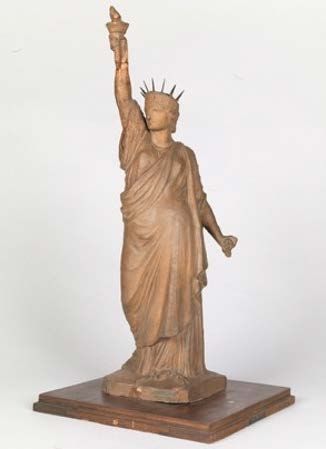The Statue of Liberty: A Buried Legacy

Written by Emma Gray, Yale 21'
Edited by Esther Reichek, Yale 23'
In 1871, architect Frédéric Auguste Bartholdi arrived in New York with a project in mind, a project so ambitious that he wrote to his mother that she should not share it lest he “would appear eccentric, even a little crazy.” When he went on to begin this project, reporters described it as, “a huge sham-sentimental melodramatic image of bronze” and one “that will merely illustrate its own absurdity.” The New York Times told New Yorkers to ignore the project, countless newspaper cartoons satirized its slow progress, and both the State and Federal Government rejected Bartholdi’s requests for funding. After the work’s completion, Bartholdi himself wrote that it “cannot be considered as a very great work of art.” He had originally intended to fulfill the vision of Édouard René de Laboulaye, the project’s commissioner.
Laboulaye wanted to build a colossal monument that celebrated the emancipation of formerly enslaved African Americans in the United States. As the head of the French Anti-Slavery Society, he conceived of the idea in 1865 as a way to celebrate America’s new “civil liberty.” Bartholdi and Laboulaye titled their aspirational and ambitious project the Statue of Liberty.
Almost 150 years later, over 4.5 million people now visit the Statue of Liberty annually and no image in America is more widely recognized.7,8 This formerly belittled Statue has appeared on every imaginable form of popular media, from the title sequence of The Sopranos to advertisements for Liberty Mutual Insurance. And yet, the Statue depicted on October 18th, 1884 in Frank Leslie’s Illustrated Newspaper looks dramatically different than the upright, proud lady in Liberty Mutual’s logo...
